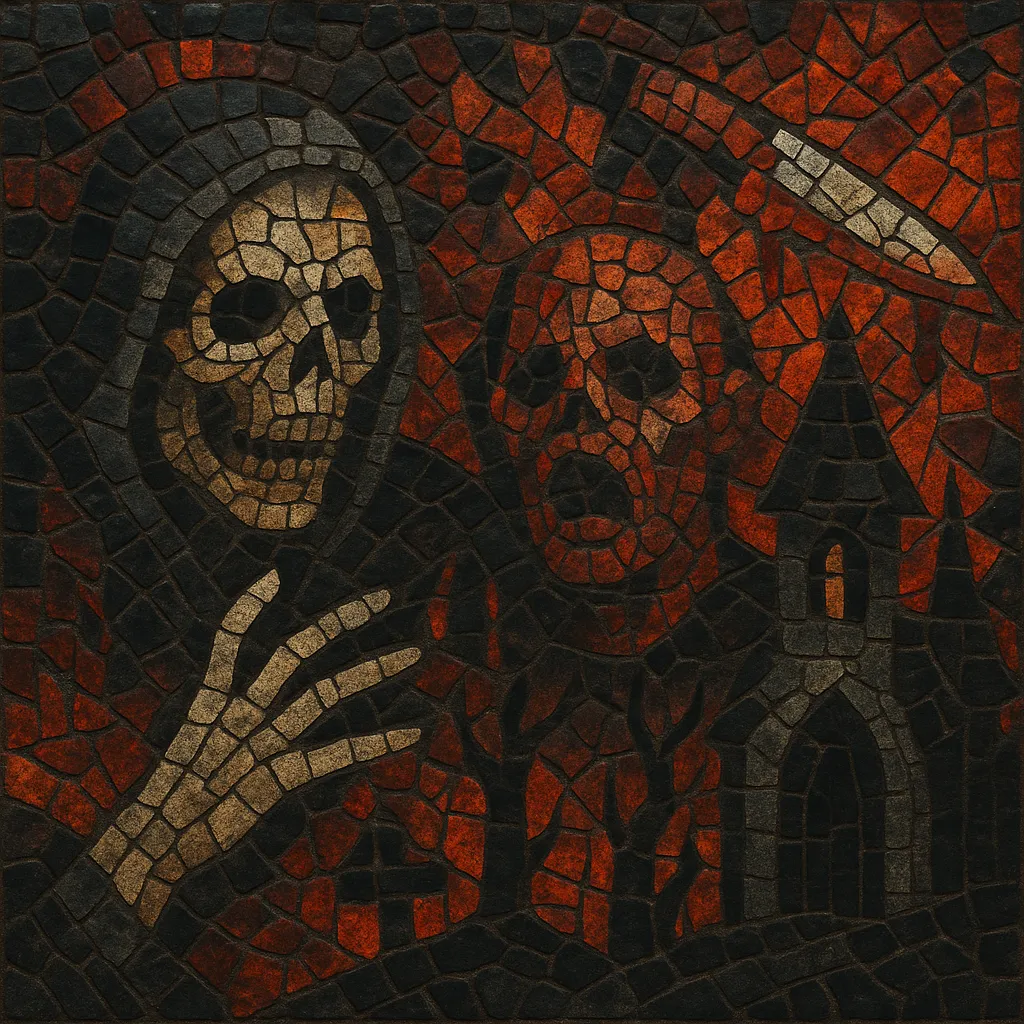Horrorcore is a subgenre of hip hop defined by its fixation on dark, violent, and occult imagery, delivered through menacing flows, brooding production, and cinematic sound design. It often blurs the line between pulp-horror storytelling and social or psychological commentary, adopting personas that heighten shock value while exploring fear, trauma, or taboo themes.
Musically, horrorcore favors minor keys, dissonant intervals, and eerie samples—think detuned pianos, church organs, creaking doors, screams, and snippets from horror films—over hard, bass-heavy drums. The result is an atmosphere that feels claustrophobic and threatening, yet theatrically stylized, evoking the mood of slasher movies and cult horror soundtracks.
Horrorcore emerged in the United States as hip hop artists began fusing gangsta narratives with horror and exploitation-cinema tropes. Early precedents appear in the late 1980s with Houston’s Geto Boys and Detroit pioneer Esham, whose self-described “acid rap” combined disturbing subject matter with lo-fi, sinister production.
The early-to-mid 1990s solidified the style: Gravediggaz (with RZA and Prince Paul) popularized a macabre, tongue-in-cheek approach on 6 Feet Deep (1994), while Flatlinerz delivered a more confrontational aesthetic. In the Midwest, Insane Clown Posse and later Twiztid built a fervent subculture around theatrical horror personas, live spectacles, and fan communities. Meanwhile, Sacramento’s Brotha Lynch Hung and Memphis crews connected the genre to the South’s gritty, underground sound—low-slung tempos, sub-bass, and occult references.
Detroit (Esham) emphasized psychedelic, lo-fi dread; Memphis (early Three 6 Mafia affiliates) leaned into occult imagery over murky beats; the Midwest (ICP/Twiztid) amplified shock-rap theatrics. Across coasts, producers sampled horror-film scores, church choirs, pipe organs, and dissonant strings, shaping a template that many later artists would reference.
The 2000s saw artists like Necro and Tech N9ne refine technical lyricism, rapid cadences, and more polished (but still grim) production. Internet distribution allowed niche scenes to flourish globally, with forums and mixtape culture circulating cult classics. The genre’s DNA began seeping into adjacent styles, inspiring darker branches of underground rap and internet-born hybrids.
Horrorcore’s aesthetic—slasher-film sampling, occult motifs, and oppressive atmospheres—directly informed the 2010s revival of 1990s Memphis stylings found in phonk and drift phonk, as well as the metal-inflected aggression of trap metal. Its theatricality also resonated with the hazy, occult ambience of witch house, ensuring horrorcore’s fingerprints remain visible across modern underground music.


